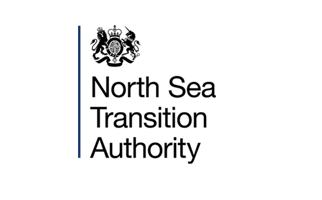
The estimated cost of decommissioning oil and gas infrastructure on the UK Continental Shelf (UKCS) has reduced from last year’s baseline, according to the Decommissioning Cost Estimate Report published by the Oil and Gas Authority (OGA) today (27 June 2018).
With a shared objective of industry and government to reduce decommissioning costs by at least 35%, the report shows industry’s progress towards the target of safely decommissioning all current and currently planned future offshore oil and gas infrastructure for less than £39 billion (in 2016 prices), and contains benchmarking of operators’ performance in cost reduction.
The updated assessment tracks progress since the OGA estimated a year ago, total UKCS decommissioning costs from 2017 onwards would be £59.7bn (in 2016 prices), and identifies the following improvements:
In real terms:
- Despite including more assets and infrastructure than the previous year, estimated costs from 2018 onwards are lower, at £58bn in 2017 prices.
Like-for-like (scope and inflation-adjusted basis):
- Comparing the same portfolio as last year, estimated costs from 2017 onwards have reduced significantly - by 7% to £55.7bn in 2016 prices.
A key contributor to this reduction is companies’ gaining valuable real practical experience in what is still a relatively immature activity.
Alongside the Decommissioning Cost Estimate Report, the OGA has launched an interactive learning microsite to continue to promote late life and decommissioning learnings.
Director of Operations Gunther Newcombe at the OGA said: “The tripartite relationship between government, the OGA and industry is working well together. It’s very pleasing to see industry make real progress towards the decommissioning cost reduction target set with them. However, costs still need to reduce further and industry must keep focused.
“The OGA is sharing some of the great examples we’re seeing of individual companies thinking differently to save time and cost.
“Companies executing decommissioning programmes have made significant efficiencies in well plug and abandonment costs. In the Northern North Sea, platform running costs have substantially reduced through better optimisation of late-life and warm and cold phases. Our interactive learning platform provides a great snapshot of some of this innovative thinking.”
Terri King, President of ConocoPhillips UK and Chair of the MER UK Decommissioning Task Force, said: “This report demonstrates a clear downward trend in expenditure and gives us greater certainty of our actual UK decommissioning costs. The OGA benchmarks and dashboards are now providing good challenging cost forecast information and, with the insights gained from the Asset Stewardship data, there is now the opportunity to identify further savings.
“One of the priorities of the Decommissioning Task Force is to enhance industry understanding of current policies, legislation and related guidance and to share examples of good practice and cost-effective compliance. Over the past year, we have seen a significant amount of transparency, collaboration and sharing of lessons learned across the industry, which all plays an essential part in the cost drive and the successful delivery of the UK decommissioning strategy.”
The analysis considers a broad range of uncertainties, using information gathered by the OGA from operators as part of the 2017 UKCS Stewardship Survey.
ENDS
Notes to editors:
- See link to The UKCS Decommissioning Cost Estimate Report 2018.
- See link to Interactive Learning Microsite.
- The Decommissioning Cost Estimate Report takes into account the estimated cost of decommissioning all of the UK’s current and currently planned future offshore facilities, pipelines, development wells, suspended open water exploration wells and appraisal wells and onshore terminals.
- The target to reduce decommissioning costs by >35% was described in the OGA’s Decommissioning Strategy, published in 2016.
- The OGA’s first annual Decommissioning Cost Estimate Report 2017 provided a central cost estimate of £59.7 billion in 2016 prices. Taking into account the shared goal of a minimum of 35% cost reduction, this resulted in a target of less than £39 billion.
- Visit the OGA website for information on the MER UK Decommissioning Task Force.
- The Department for Business, Energy and Industrial Strategy (BEIS) is the competent authority for decommissioning and regulates offshore oil and gas decommissioning under the Petroleum Act 1998. The OGA works with BEIS and is specifically required to assess decommissioning programmes on the basis of cost, future use and collaboration.
- For fiscal matters, including questions relating to decommissioning tax relief, please contact HMT.
For more information, please contact Tracey Miller, communications manager at the OGA:
Tel: 0300 020 1072 ¦ Email: Tracey.Miller@ogauthority.co.uk or oga.pressoffice@ogauthority.co.uk


